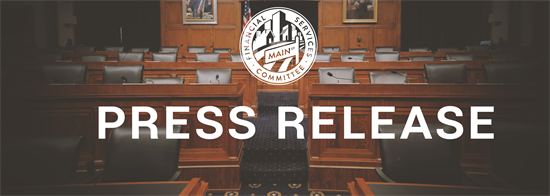An Overview of Homelessness in America
Washington,
May 17, 2018
The Housing and Insurance Subcommittee met today to examine the current state of homelessness in America, and to discuss issues regarding veteran, youth, and any other populations affected by homelessness. The majority of programs to reduce homelessness and provide assistance in housing services fall under the responsibility of the Department on Housing and Urban Development (HUD) and Veterans Affairs (VA). The McKinney-Vento Act plays a key role in reducing homelessness. Congress has increased funding over a 20-year period to support federal, state, and local efforts to decrease homelessness across all demographics. It has been reported by the Department on Housing and Urban Development (HUD) that from 2008 to 2016, the number of people experiencing homelessness has declined. “Today’s subcommittee hearing was critical today in order to discuss state of homelessness in America and to review the effectiveness and efficiency of our federal programs. It was also critical as we determine if we are getting the most out of taxpayer money that is currently appropriated to them. We need to make sure HUD’s resources are not focused primarily on metropolitan areas. That means addressing some of the funding disparities between rural and urban populations. We can start by looking at the federal definition of homelessness to be more inclusive and recognize the reality that the homeless population in rural areas face different challenges than the homeless in large metropolitan cities,” said Subcommittee Chairman Sean Duffy (R-WI). Key Takeaways
Topline Quotes from Witnesses “There is no one pathway to homelessness for youth and there is no one pathway to stability… Utilizing the McKinney Vento Education Act definition allows us to assist youth before they become chronically homeless. As the debate continues, I encourage us to think outside of the confines of definitions and to decide what we think is acceptable for youth who grow up in our nation. Youth without a permanent place to call home, regardless of where they are staying from night to night, are without stability… Solving this difficult issue requires the flexibility to incorporate known best practices from all youth serving agencies,” stated Ann Bischoff, Executive Director, Star House. “In rural Wisconsin, there are many unique partnerships to assist homeless families in providing housing as well as skills to move them out of poverty… In addition, private donors and private foundations offer additional funds to provide the needed case management to assist clients [in maintaining] housing stability… Through my work with the homeless population for the past 15 years, I have realized that the strategies focusing on collaboration utilize excising funding from State, Federal, and private donors more effectively… In addition… providing housing with supportive services creates an environment in which program participants are less likely to draw on expensive public services, use homeless shelters, or be incarcerated,” stated Duana Bremer, Social Service Director, Polk, Burnett, and St. Croix Counties, The Salvation Army. “Homelessness has declined among all subpopulations, including individuals, families with children, veterans, and people who are chronically homeless... It happened because of strong, outcome-focused federal support, including most notably via the McKinney Vento homeless assistance programs; and improving strategies and practice at the local level… The federal government has a critical role to play in solving the problem, and it has shown that it can play that role very effectively,” stated Nan Roman, President, National Alliance to End Homelessness. “Homelessness is a complex challenge, requiring many collaborative approaches to addressing the needs of homeless people, but first, and foremost, homelessness is a crisis of housing affordability… We need to focus our homeless resources on effective programs, programs that work, using the best available data to make decisions,” stated Peter Lynn, Executive Director, Los Angeles Homeless Services Authority. |


